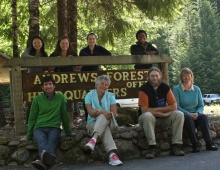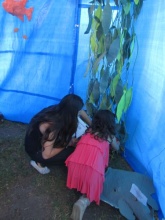A workshop was held at HJ Andrews LTER site where MCR graduate students Emily Rivest, Xueying Han, Samantha Davis and participants from five other LTER sites solidified the foci for two manuscripts. Their aim is to elucidate the utility of using indicators other than species abundance to detect and describe ecosystem transitions. This working group, formed at the September 2012 LTER All Scientists Meeting, is supported by the LTER Network Office and the Gordon and Betty Moore Foundation.
News
- Saturday, June 1, 2013
- Sunday, May 5, 2013
In 2013, MCR received supplemental travel funds from NSF to hold a week-long workshop on Racha Island that would help establish a biological time series sampling program that produces data comparable to those collected by MCR and to engage in a capacity building effort to train 20 Thai marine scientists and graduate students in conceptual and practical issues underpinning long term, site-based research on resilience on coral reefs. Funding was awarded to the Lead PI of the Racha Island site, Dr.
- Saturday, April 20, 2013
MCR and SBC LTER scientists, graduate students, and outreach staff hosted a booth at the 2013 Santa Barbara Earth Day Festival to raise public awareness about MCR and SBC LTER research activities. This year's Earth Day festival attracted 35,894 people over its two day run. Visitors to the LTER booth were able to ask questions of SBC and MCR researchers and graduate students to view informational posters, and discuss research-related issues.
- Saturday, March 30, 2013
CCE LTER hosted a graduate student symposium at Scripps Institute of Oceanography in La Jolla to promote collegial exchange of research results among the southern California LTER sites (SBC, MCR, and CCE). The participants are students at UC San Diego, UC Santa Barbara and Cal State Northridge, and are researching marine ecosystems in the Antarctic, French Polynesia and southern California. The symposium's format allowed for both oral and poster presentations, and also allowed students to begin developing their future collaborations.






